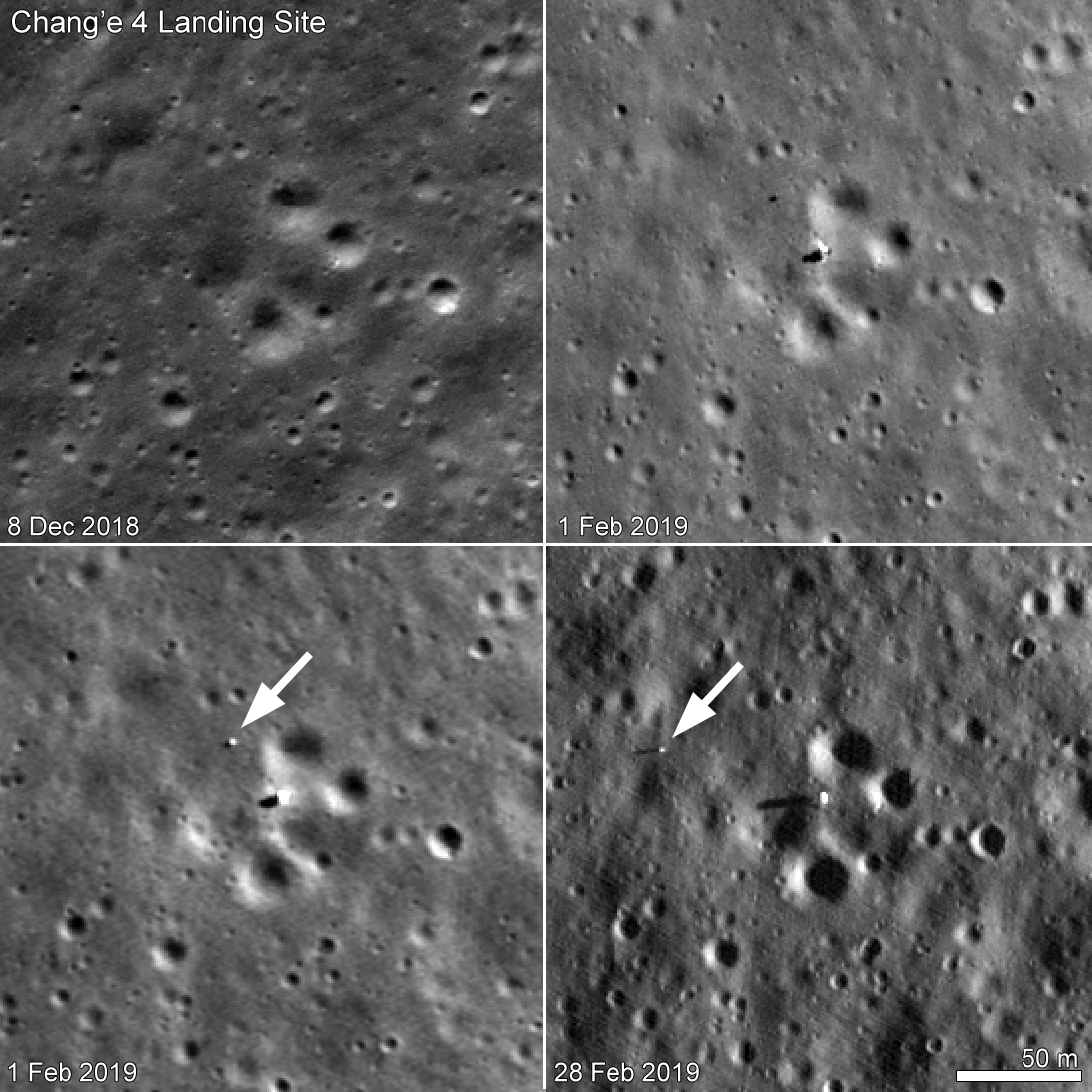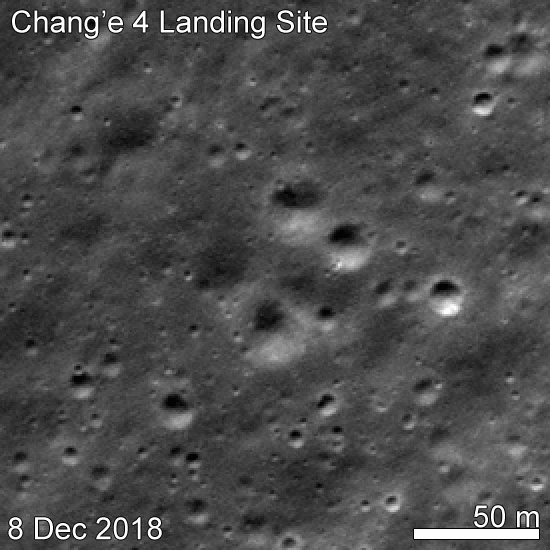
LRO passes over any given place on the Moon at least once every month (in the daylight), allowing the westward progress of the Yutu-2 rover to be seen. At the end of February, Yutu-2 was 69 meters from it's home base, the Chang'e 4 lander; LROC images show Yutu-2 made 46 meters of westward progress during the month of February.
Each month when LRO images the landing site, Statio Tianhe, the lighting changes, providing a different view of the surface. During times near dawn or dusk long shadows enhance topography and closer to noon differences in surface brightness are more apparent. In the latest image from 28 February, the Sun is near the horizon and the lander and rover each cast long shadows.

Over the next few months, the Sun will rise higher and higher over the landing site when LRO is overhead, providing the opportunity to obtain images with no shadows. Those images will be particularly useful for mapping differences in brightness (albedo), and we should get our first real look at the "blast zone" - the region that was brightened around the lander as rocket exhaust interacted with the regolith, as seen around all other landing sites. The tracks of the rover should also be visible in the coming months, allowing us to follow Yutu-2's exact path along the floor of Von Kármán crater during its exploration of the lunar farside.
Related Featured Images
Chang'e 4 Rover Comes Into View
Von Kármán Crater: Awaiting A Visitor
Published by Mark Robinson on 20 March 2019